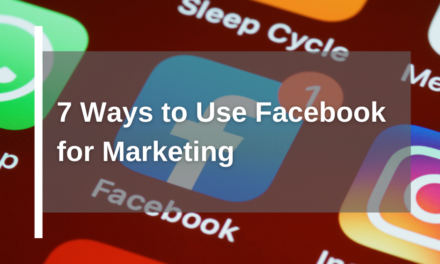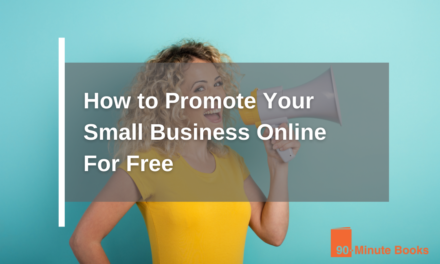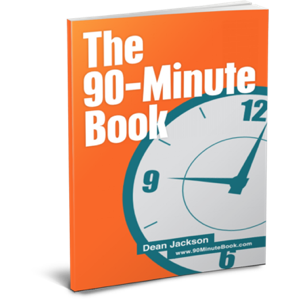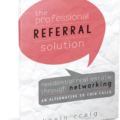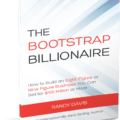Achieving conversions means tons of trial and error.
It requires a bit of effort, vigor, investigating, and experimenting to properly complete.
But don’t let that freak you out.
You certainly don’t have to invest as much money as I did – it wasn’t a requirement.
I’m here to give you tips to complete the conversion process.
To accomplish this, it is not necessary to do an extensive overhaul of the website.
You don’t need to be an expert in Conversion Rate Optimization. You just have to be consistent.
You can accomplish great things by making small changes every day.
Focus on these simple tasks to help convert more customers and save time (and money).
1. Add social proof to your landing pages
Social proof is the new word-of-mouth.
Why does it work? Because people like to be in with the in-crowd.
If someone’s friend has already given a thumbs up to your Facebook page, others may be more likely to do the same.
Utilizing testimonies on your website can also help boost your conversion rate.
You can showcase your accomplishments by listing awards you’ve earned, firms you have partnered with, and genuine customer feedback.
This will give potential customers evidence that you can be relied on as an organization to buy from.
Putting customer testimonials on homepages has increased trust, a key element in improving sales.
They work because they build credibility.
It is possible to acquire them rapidly if you already have customers.
You don’t need to dedicate hours to crafting examples or determining results.
Only inquire from your customers what they have already enjoyed regarding your company. Easy, right?
Investigations demonstrate that illustrations heighten the perceived dependability of a declaration.
It is important to include pictures when using testimonials in your content.
The images don’t need to be of customers, but they can be.
The logos of a company or the images of stocks might be very easy to get.
2. Add lead magnets to your site.
An offer of value is given to visitors in exchange for their email addresses. This offer is called a lead magnet.
It can be said that almost all of the visitors to your web page aren’t looking to make a purchase when they arrive.
Maybe they already know about you, maybe they don’t. But they need a little coaxing before they commit.
Testimonials are helpful when it comes to gaining people’s trust, which increases the probability of them making a purchase.
But you still need a conversion.
Lead magnets are great at creating conversions because they do not require an individual to commit.
Customers are prepared to provide the data they need to receive something valuable.
You receive an email, and they are given a complimentary item. It’s a win-win.

FREE BOOK
Discover the 5 Compelling Book Titles Types that create an ‘I Want That…’ response.
3. Include a short explainer video
Explainer videos are great.
Videos can be a useful and rapid tool for demonstrating your value offering succinctly and may help to improve visitor interaction and the duration of their stay on your site.
Salesforce loves explainer videos. And why not?
They increase conversion rates by an average of 20%.
The fundamental building block of successful explainer videos that convert is having a worthwhile script that viewers will take an interest in. Put effort into fine-tuning your message and crafting words that effectively advertise your video.
However, if it’s not the case, you must direct your efforts toward this point.
Contemplate how you’d promote your item or service in a brief elevator talk-style statement.
Who would your audience be?
What’s the overall tone you want to convey?
What do you want the reader to do at the end of the text?
The great thing is that you can get assistance from outside sources when constructing the video.
Many people hear the term video and instantaneously think of the cash associated with it.
But it doesn’t have to be that way.
A professional video company can be used, or alternative options, such as freelancers, can be sought. I typically recommend freelancers.
Large corporations can charge anywhere between five thousand to twenty-five thousand dollars for an elementary video, and it will take them some time to finish it (I’m being serious).
It is possible to get a straightforward video made in a quick timeframe with the services of a freelancer, and the price could range from half a thousand to two thousand dollars.
If you’re pressed for time and need a video hastily, you can always take advantage of a platform like Fiverr.
If you have no knowledge of Fiverr, it is an internet platform that brings freelancers from all parts of the globe who provide services beginning at five dollars, which is how the service got its name.
You can significantly reduce the amount of time and resources if you have many videos you need to make. It is usually possible to procure a Fiverr freelancer who will deliver your work within a day.
Keep a record of your video engagement data with something like Wistia to eventually optimize your profits.
Speaking of maximizing, there’s one more thing you can do to really see conversions.
4. Cater to your mobile users
There will be 6.1 billion smartphone users by 2020.
Mobile phone searches on Google outnumber desktop computer searches in the United States and nine other international countries.
Folks are accessing your website via their cell phones.
Perhaps you are viewing this on your mobile device at the present moment.
Your website has to be able to adjust to the size of mobile screens so users do not abandon it.
If a website isn’t designed for mobile use, it should be the main priority to make this change to help boost conversion rates.
A mobile-responsive website will adjust its dimensions when the browser window’s width is reduced.
How the website looks and the information it contains might be altered to fit the size of the device it is being seen on.
Google really loves mobile responsiveness.
Being responsive implies enhanced usability, fast loading speeds, and fewer visitors departing early, all qualities that Google analyzes when determining the worth of a website.
You can exploit Google’s enthusiasm for being responsive to boost your sales.
Aside from constructing a website that is easy to navigate on mobile devices, you can take advantage of Google’s AMP framework.
AMP is a free, open-source platform that enhances any individual’s mobile page viewing speed and simplicity.
In early trials of the AMP architecture, it was observed that loading speeds were decreased by a range from 15% to 85%.
A significant issue that mobile phone users experience frequently is staying connected.
They may have a fast internet connection at their house, but they lose connection when they go outside their city, for example.
Google is utilizing AMP to increase the speed at which your web frame will load, regardless of the situation.
5. Answer your audience’s toughest questions
Trust is the true currency of any business. Marketers frequently come up with content aiming to reach as wide an audience as possible. We compose content with our pertinent phrases to aid our search engine results.
The point of this is to have as many possibilities as possible to increase our likelihood of achieving our desired outcome.
Rather than targeting popular keywords, there is a more effective way to engage your target audience if you want to increase revenue.
The initial step is to respond to the hard queries they are inquiring about to help them select an apt option.
Most of these queries are posed further along the consumer’s purchase journey. These are usually questions your rivals do not wish to respond to until they engage directly with potential customers.
At times the solutions to these queries are intricate or awkward, yet by instantly responding to them and facing the distress, you are reinforcing to your audience that you are looking out for their benefit.
6. Work with sales to start with the right topic.
It doesn’t matter how well-optimized your content is if you’re writing about things that are not useful to your customers.
Ensure that you are tackling topics of importance by conversing with your sales personnel to discern the sorts of queries that your prospects and customers are consistently inquiring about. Then turn those questions into article topics.
You may be considering if you request suggestions from sales, will you get a lengthy catalog of sales support material?
Absolutely!
Most of what is provided by the sales staff will be sales-oriented content. Ultimately, this type of material they need simplifies their workload, boosts sales and increases profit.
Hang on … isn’t gaining profits the ultimate target of the articles you write?
7. Understand the buyer’s journey
When looking over your blogs to boost sales, remember that not all blogs are equal; some topics are more likely to result in conversions than others.
Articles considered while a buyer is in a decision-making process have more of a chance to transform leads into established sales than articles that give people awareness of an item. The purpose of the sales-related content you just gathered from the sales team is to bring about conversions.
Pieces of writing at the recognition level have a higher chance of persuading people intrigued to learn more about you; these individuals may not yet be ready to acquire from you.
To put it another way, the type of content offered will likely be influenced by the stage of the customer’s purchasing journey.
If people aren’t ready to buy something from your brand yet, but they recognize it and appreciate the content you produce, keep them involved by asking them to become followers of your blog. Using checklists, templates, tip sheets, and workbooks can effectively convert leads at the start of your pipeline.
People at the evaluation stage have a better understanding of what their issue is and what offerings are available. They are now searching for materials that will assist them in locating the most suitable option. Lure them to switch by providing product/service buying aids, comprehensive electronic books, enlightening videos, a virtual seminar, or a previously taped exhibition.
For those taking the next step in the process, provide them with a tailored demonstration, have a telephone conversation for advice, or even a manual outlining what it’s like to do business with your company.
There are numerous possibilities for appealing to visitors to involve with your brand. However, you should always consider how far along their buyer’s journey the readers are and what sort of offers would get them to convert at that point in their experience.
Be certain that the offer associated with your blog post, such as via calls to action and buttons, is the logical next step for your readers to increase conversions.
8. Develop a content map
One of the best ways to provide customers with the information they need to purchase is by constructing a content map.
This is the spot to assemble your great ideas, articles, and offers related to a certain subject and create an organized path for a consumer to follow.
Your initial action should be to sort your resources into the different phases of the buying process: gaining knowledge, weighing options, and making a choice. Determine which proposal(s) would motivate the reader to progress further.
A map of your content will inform you of any elements you have not yet gotten around to and the areas you have significantly achieved.
This can assist you in deciding on related topics for your editorial schedule and deciding the suitable article-CTA combination when it is time to distribute.
9. Run a topic litmus test
The litmus test is a great aid for determining whether or not a subject has the potential to help your venture advance.
This test consists of four seemingly simple questions that you (or the person who suggested the topic) should be able to answer easily:
- Is the topic relevant to your buyers? (Bonus points for pinpointing how the topic is relevant.)
- At what stage of the buying process would someone need this information?
- What are the words the buyer uses to ask for this information?
- Is a blog article the best way to relay this information to the buyer?
If you or the subject matter expert (SME) cannot reply to these queries, it would be wise to pause deliberating the issue until greater knowledge of its relevance can be acquired. If considerable time has gone by without any progress toward settling this issue, it might be time to give up.
10. Infuse your text with personality
When was the last time you took the time to look into a product you were considering buying and wanted a straightforward, book-style summary of its capabilities?
Probably never.
Why would we anticipate our audience not wanting to read something entertaining or relatable?
Personalities can be displayed to set you apart in a chaotic situation full of data written by folks who tend to follow the narrative framework taught to them in junior high school.
Utilize the qualities that make you unique to gain an edge in the competition by writing in a natural style, referencing anything that sets you apart, and offering illustrations and tales from your experiences.
Guest Post Disclaimer
The views expressed in this post do not represent the views of 90-Minute Books. The information has not been verified and should be considered an opinion. You are always advised to do independent research.


